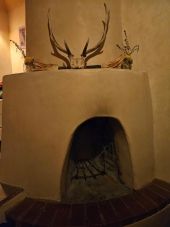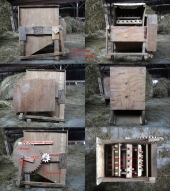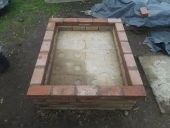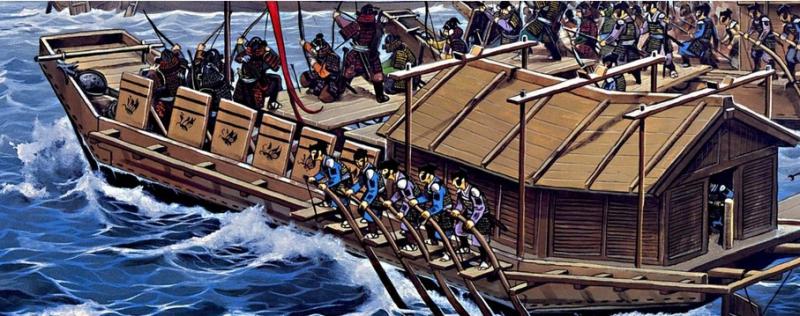I don't see a whole lot of traffic on these forums about small watercraft - sailing vessels; oar, scull or sweep powered; current powered river ferries; towpath barges; or even propeller or paddle wheel driven boats. Admittedly, current ferries and towpath barges require very specific circumstances.
I know Ernie and Erica Wisner have experience with blue water voyaging. There are probably others who haunt the forums, too, but I just don't see much discussion here about boats.
We have a pair of short (10 foot) kayaks - just for puddling around, not proper sea kayaks, or anything. I have a ~19 -foot Grumman Sport Boat (a square-sterned wide canoe, rated at 1100 lbs burden) waiting for me to collect it from a friend. My brother acquired most or all of a sail rig for a Sport Boat in some complicated horse trade, it has a pair of oarlocks, and a transom that can take a motor. An outrigger or sponsons (or even both) are probably not a bad idea with the sail rig, at least until I get my sea legs! Some of the folks who run these on rivers in Alaska have been using longtail mud motors to push them upriver for moose hunts, cabin repair supplies, etc. A set of retractable portage wheels, of the type made popular by a couple of shops on the Minnesota Iron Range (Evelyth, maybe?), for use in the Boundary Waters Canoe Area (where permissible), could be useful under some circumstances.
I have collected some info on sizing and constructing a "ro" or "yu lo" type of sweep oar - traditional auxiliary power for boats in East Asia, from Japan to Vietnam and beyond. Pedal powered versions of these are possible. If I can find the video on YT, I'll post a link to just such a setup, in use somewhere in England. The Grumman Sport Boat could, I think, be easily driven with a ro/yu lo type of stern sweep.
The "chine runner" keel-less small sailboats, originated by Matt Layden, and subsequently developed by others, too, are another technology which is very interesting, making surprisingly small and shoal draft sail boats remarkably capable off shore.
On "the list" is to (eventually) build a John Welsford-designed SCAMP sub-12-foot plywood sailboat. They are very seaworthy for the size, and absolute tanks, if well constructed. Howard Rice, a very experienced small boat sailor in blue water, attempted to sail through the Strait of Magellan with a specially outfitted one, got chucked up on a small island in a storm, was rescued by the Chilean Coast Guard, and later returned in better weather to retrieve the largely undamaged boat (which is now in a museum in Sheboygan, Wisconsin, if I recall correctly, though I haven't yet been to see it). Howard has made a number of sailing canoe voyages between islands in Micronesia, and took a canoe through the Strait of Magellan. Gnarly.
I also have some stuff on designing and building junk rigs for sail boats, somewhere in the stash of stuff. Hassler and McLeod's "Practical Junk Rig" is a bit dated, but is still the English language go-to resource, as far as I am aware.
Another interesting sailing technology is the multiple dagger board sailing rafts, historically used along the Pacific coast of South America. Thor Heyerdahl had some information in his book "Kon Tiki" (whatever you might think of his hypothesis) on how to manipulate the dagger boards to tack and to sail both on and off the wind. Heyerdahl also highlighted the reed sailing boats of the Nile and lower Euphrates Rivers, and Lake Titicaca in "Ra". The Nile style of these vessels used a pair of shear legs for a mast, rather than a single "stick".
I am no sailor, though I've done a bit of sailing, and have generally puddled about in small boats, made a couple of 10 day canoe trips, etc. And, as we know from "The Wind in the Willows", there is nothing half so much worth doing as messing about in boats!










